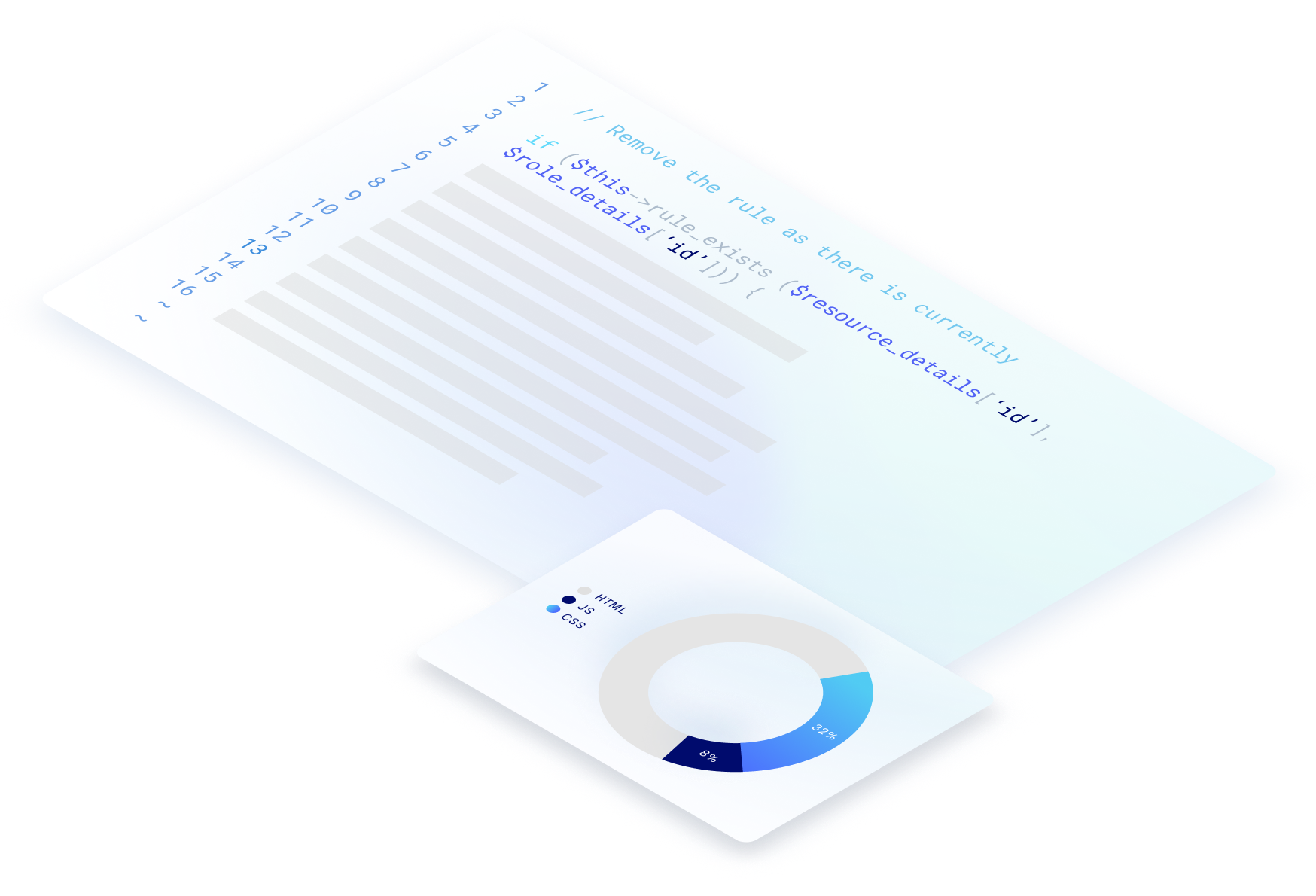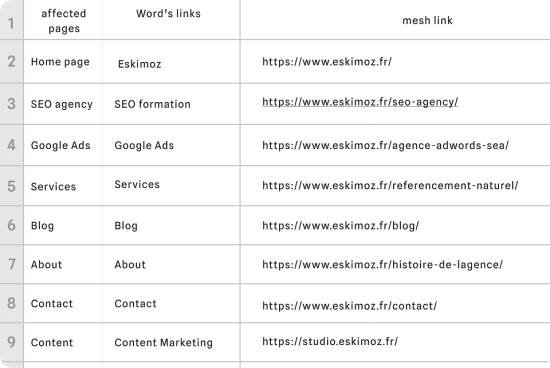
Technical SEO Audit: How to conduct a technical SEO audit
An technical SEO audit aims to identify the levers for improving natural referencing on your website. Find out here how to carry out such an analysis.

What is an technical SEO audit?
What are the objectives of a technical SEO audit?

-
Improve your SEO ranking
In other words, position your website’s pages in the top results of the SERP, as 90% of internet users typically do not look beyond the first page.
-
Generate more traffic
With higher visibility in search results, more users are likely to click on your website’s organic links, leading to increased traffic to your site.
-
Enhance user experience
A user-friendly website that is easy to navigate on desktop and mobile devices can help visitors find the information they need and improve their overall experience on your site.
-
Optimise conversions and sales
By targeting relevant keywords and generating more qualified traffic from search engines, your website has a better chance of converting visitors into customers and driving sales.
-
Strengthen digital reputation
Increased visibility in search results can help improve the reputation of your brand or business, as high-quality content is highlighted by search engines.
When is the best time to conduct a technical audit?
An SEO technical audit can be performed at various stages of your website’s development. However, a specialised SEO agency may suggest carrying out an audit during key events such as after the site’s creation to confirm that the technical specifications have been implemented correctly, or in the case of significant redesigns or migrations, after making corrections or optimisations to measure new performance, or after changes in the site’s structure, such as the addition of many pages or a complete revision of the hierarchy. If there is a suspicion of a Google penalty, an audit may also be necessary. It’s possible to conduct a technical audit at any time to evaluate a site’s performance and ensure that it remains at a top level.
How does an SEO technical audit work?
Preparing for the technical audit:
prerequisites
Before starting a technical audit, it’s essential to assess the current state of your website and your digital strategy. This will help define the approach and identify specific areas to analyse. First, the assessment aims to understand why you want to conduct an audit: is it due to a recent change on the site, a sudden loss of position or traffic, a significant algorithm update from Google, a redesign, or a migration? Second, your digital strategy must be clearly defined. It’s common for the agency conducting the audit to ask questions about your business goals, target audience, and SEO optimisation history. These factors will help determine the scope of the technical audit, which is closely linked to the content and popularity pillars.

The essential tools for conducting a technical audit
It’s no surprise that analysing your SEO technically can’t be done by hand, especially if your website has hundreds or thousands of pages. You need to use dedicated tools, each with its own specifications: a crawler (such as Screaming Frog or Botify), a tool to track page positions for targeted keywords (such as SEMrush or Yooda Insight), a statistical analysis tool (Google Analytics), a solution to analyse logs (such as OnCrawl), the Google Search Console to evaluate the site’s SEO performance, PageSpeed Insights to measure page loading speed, etc. However, these tools are meaningless without the expertise of a professional – an SEO consultant – who can classify the data, interpret the results, and derive actionable insights.
The importance of crawling in SEO technical audits
Crawling refers to the method used by search engine robots to analyse the content of web pages and index them. These computer programs can be thought of as digital versions of the spider robots from the movie Minority Report: they infiltrate the web, moving from page to page via hyperlinks, in order to understand what sites are about and evaluate how they can answer user queries. Tools dedicated to reproducing this crawling process are usually employed as the first step in an SEO technical audit. By launching a crawl, errors like broken links, duplicate content, broken redirects, and poorly filled tags can be identified and obstacles to robot exploration can be removed. However, to provide the best results, this method should be supplemented with a log analysis (see the next section).
Analysing the results and creating a list of fixes to apply
The purpose of an SEO technical audit is to identify any issues with a website and propose a series of actions to optimise its pages based on the results obtained from the analysis. To achieve this, a list of actions is created based on their importance (i.e., their weight in terms of SEO) and their ease of resolution. For example, optimising the crawl is a strategic lever, but it requires external expertise (such as that provided by the agency handling your audit). Other actions may involve removing broken links, optimising URLs, filling in appropriate tags, and so on. Once your site is in good health, you can focus on the other pillars of SEO optimisation: content (semantic) and popularity (using off-site SEO levers).

The key points to check during
a technical audit
What are the fundamental points to analyse during an SEO technical audit?
A technical audit covers various aspects of a website. Here are the main points to analyse to obtain a usable report and implement appropriate corrective actions.

-
Page indexing
For a website to generate traffic, its pages must be indexed by search engines. If a technical audit reveals indexing problems, there are two levers that can be activated: the configuration of the robots.txt file, which guides the exploration of bots and, if necessary, indicates pages not to be indexed, as well as the submission of a sitemap file that lists all the URLs of the site and the links between them.
-
Log analysis
Analysing log files gives you the ability to view your site exactly as robots do. This provides an opportunity to check whether newly added content has been crawled, determine the frequency and crawl window, and identify other important data such as response code errors in URLs, indexed pages not linked to the site, crawl gaps, mobile version placement, and more.
-
HTML tags
Optimised tags help search engine robots understand the content of pages and then evaluate their ability to respond to user queries. Poorly filled or duplicated tags can have detrimental effects on your SEO and optimised tags can boost your performance. For international sites, hreflang tags are crucial since they allow the correct version of a page to be displayed to the right user, i.e. in the desired language.
-
Redirections issues
Redirections are crucial for the proper exploration of a website. During an SEO technical audit, altered redirections may be detected, whether they are temporary (“302”), cascading (meaning URLs that are subject to successive redirections) or leading to errors (“404”, “410”). This verification is essential after a redesign with a domain change, after a migration or after switching to the HTTPS protocol.
-
404 errors
Among the common errors related to redirections, the “404” code is the most disabling: when a robot detects this error, it removes the affected page from its index because it is considered useless. The consequences of a “404” error are numerous: loss of visibility, traffic, authority… The technical audit is therefore vital in detecting the affected URLs and correcting the problem.
-
Page loading speed
The time it takes for a page to load on an internet user’s browser is a ranking criterion in its own right. Core Web Vitals measure it accurately. This type of problem is highlighted during a technical audit, which not only identifies the time required for the page to load but also the consequences on the bounce rate.
-
Structural depth
The depth of pages is related to the structure of the website and refers to the number of clicks required from the homepage to reach a specific page. During a technical audit, pages that are buried too deep within the site’s structure to be reached within a maximum of three clicks (as recommended by Google) are highlighted. If it’s not possible to completely revise the page hierarchy, there are other methods such as implementing a breadcrumb trail.
-
SEO cannibalisation
Cannibalisation occurs when two or more pages are competing for the same search query. This can cause robots to favour one page over another. Whenever possible, it’s best to focus on one strategic keyword per page and use an SEO technical audit to verify that the risk of cannibalisation is absent.
-
Image optimisation
Images are essential for the attractiveness of a web page, but they can easily slow down its loading time and also cause issues for crawler robots, as they cannot see the illustrations. An SEO technical audit helps to identify problematic images and optimise them by reducing their size and providing the “alt” attribute (which allows robots to “read” the image).
-
Internal linking
The way in which the pages of your website are linked together is crucial: this “network” facilitates user navigation and streamlines crawler robots’ exploration, as they move from page to page via links. The quality of internal linking thus has a doubly positive impact on your website’s SEO performance. Also, remember to optimise link anchors.
Our Commitment
-
Expertise
Since 2010, we have worked with over 2000 clients across 90 countries.
-
Passion
We are a team of passionate, industry-focused individuals who are committed to your success.
-
Performance
We’re committed to implementing a data-driven strategy, making a real impact on your bottom line by providing avenues for growth.
Any questions?
A technical audit is one of the key elements in analysing the existing organic search optimisation of a website, alongside content (semantics) and off-site popularity (SEO off-site). The purpose of a technical SEO audit is to assess the overall health of a website and identify any potential errors that could negatively impact its page rankings in search engine results. To achieve this, it’s crucial to approach the audit from the perspective of crawler robots.
A technical SEO audit is carried out with a specific goal in mind: to identify any obstacles that may hinder the correct optimisation of your site. By identifying these issues, you can create a list of necessary fixes to enhance performance and boost the ranking of your pages in the SERP. However, it’s important to note that conducting a search analysis requires expertise in SEO and should be supplemented with audits focusing on content and linkbuilding.
Before initiating a technical audit, it’s crucial to conduct a comprehensive assessment of your current situation and gain an overall understanding of your digital strategy. This step is essential in evaluating the specific needs and defining the scope of the upcoming audit. Following this, it’s important to select the appropriate tools, conduct a thorough crawl of your website, and then collect and analyse the results in order to implement the recommended actions.














